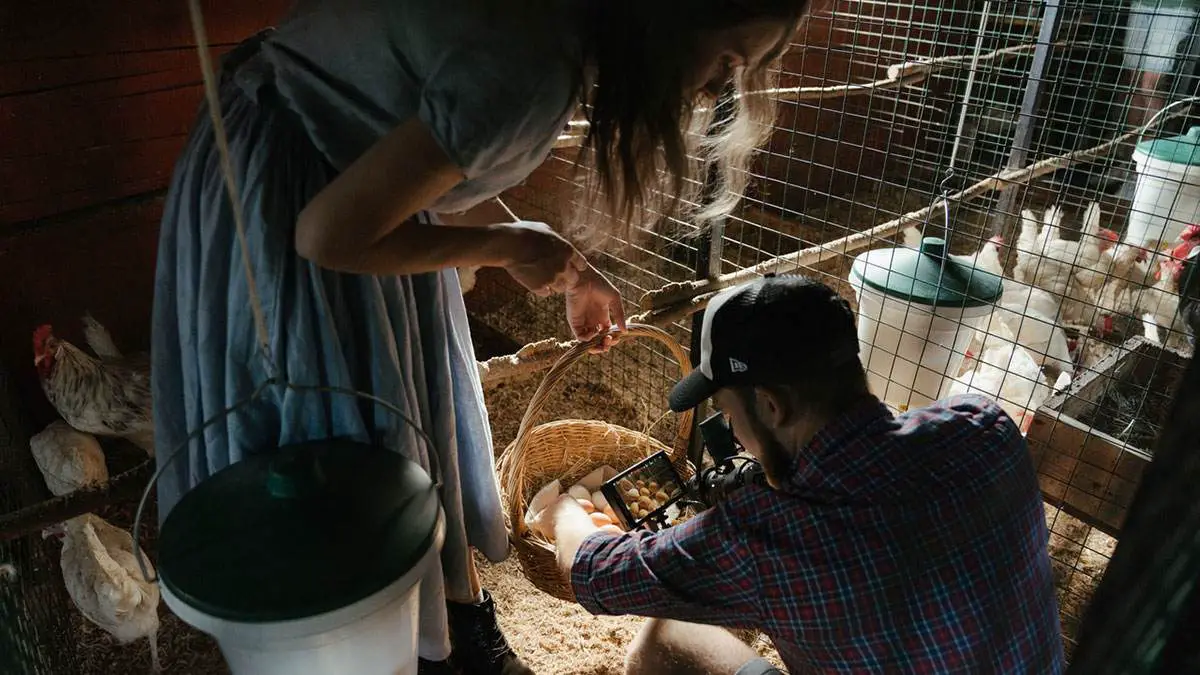Table of Contents
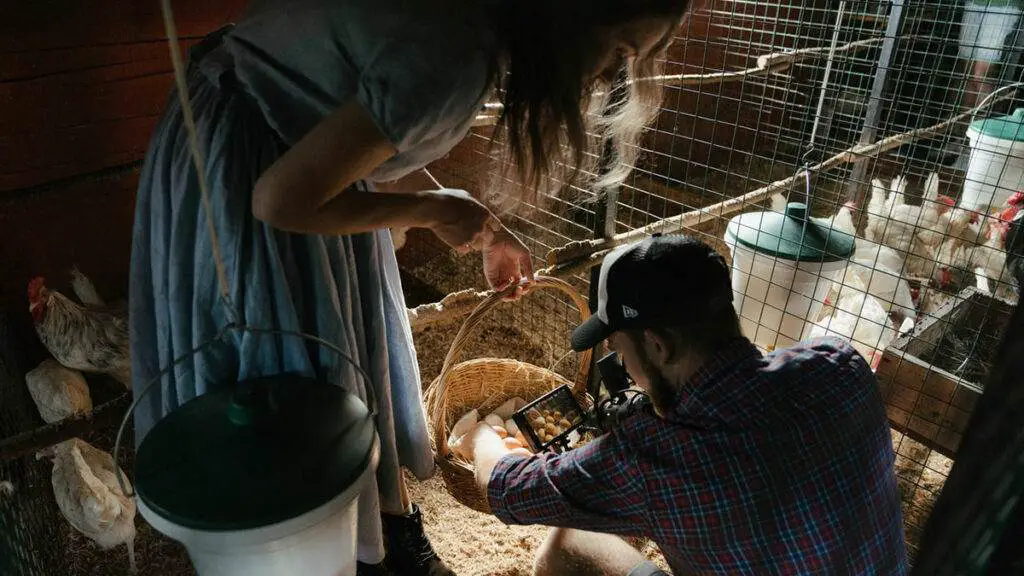
The search for a commune can be challenging. Let’s look at ways to figure out how to find a commune because many people have dreams of homesteading but can’t afford the property necessary to live a homesteader’s life. Are communes a financially viable option? Let’s take a look.
Consider the word “homesteading”. Do you imagine chopping wood, hauling water, and sitting on a cold outhouse seat on a winter’s night while you pray that a spider doesn’t crawl across your bottom?
These can be realities, but the deeper truth about homesteading and communal living makes for a richer and more varied story – one you should be familiar with if you intend to search for a homesteading community in which to work and live.
My Commune Experience
I spent my childhood in an intentional homesteading community, helping to weed the acre-sized garden, getting sawdust on my hand-me-down jacket when it was my turn to fill the woodbox, rambling in the forest picking wild raspberries, and hopping along with the stones in a babbling creek.
One time, I was told by my folks that my stepsister and I, at a young age, were left home alone while they went into town for supplies. Without the electronic babysitter of a TV, we were left to our own devices.
There was a delay in the parental return, and by the time the old Datsun came rambling down that dusty driveway, we two kids were at the top of the hill holding tall “wizard staves,” stark naked except for mud-painted rings around our belly buttons.
That’s not to say that the homesteading lifestyle will result in feral children. Both my stepsister and I went on to become educated, successful adults.
But the story illustrates the funkiness, for lack of a better word, that can be associated with communes in the eye of the broader public.
So, to underscore the viability of communal living and to dispel the myth of the “‘Deliverance’ meets ‘Lord of the Flies” alleged nature of the lifestyle, let’s talk about communes from the beginning.
And more importantly, we’ll investigate the process of finding the proper homesteading commune for you.
Brief History of Communes
Communes – the Early Days
The commune, as a mode of government and a system of living, has a wide range of historical, societal, and political underpinnings.
But for our purposes, an excellent place to start is Sunburst, one of the oldest, most successful, and most famous American communes.
The brainchild of former bricklayer Norman Paulsen, the Sunburst community started as a simple group meditation meeting.
After a couple of years, Paulsen had attracted over a hundred followers to his loosely Christian-based flock. The group purchased a California ranch where they at first lived in teepees. Former member Mehosh Dziadzio describes one of the group’s rituals in a Messy Nessy article about Sunburst:
Before we started our day, we would join hands in a circle to thank Mother Earth for the bounty she has given us and pray for the healing of our precious planet, much like the native peoples who came before us.
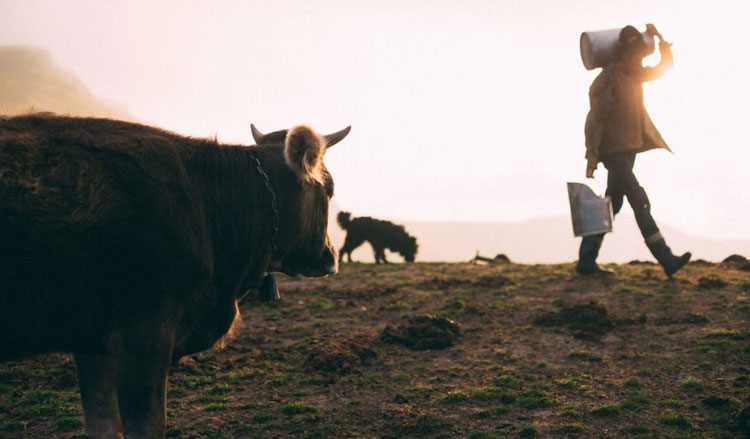
Soon, the Sunburst group was tending orchards and raising goats and horses, and shortly after that, they opened storefronts in local towns and cities and even a café.
Townspeople noticed the bare feet and business acumen of the Sunburst residents. At its peak, the commune was a multi-million-dollar enterprise.
The example illustrates the basic idea of communal homesteading: self-sufficiency, non-hierarchical adjudication, governance (although at Sunburst, Paulsen’s word was law), and shared profits from trading surplus goods. That was the goal at the beginning.
Communes Today
Today, homesteading methods on a commune are similar, albeit with less of a focus on any particular faith or mysticism, and without a philosophical leader who determines the path of the entire group.
Communal homesteaders’ physical locations are described by many names – utopian communities, intentional communities, egalitarian communities, or just plain communes.
But the basic idea is the same: a place set apart from the nerve-jangling greed of capitalist urbanism where you can work the land and be a part of something greater than yourself.
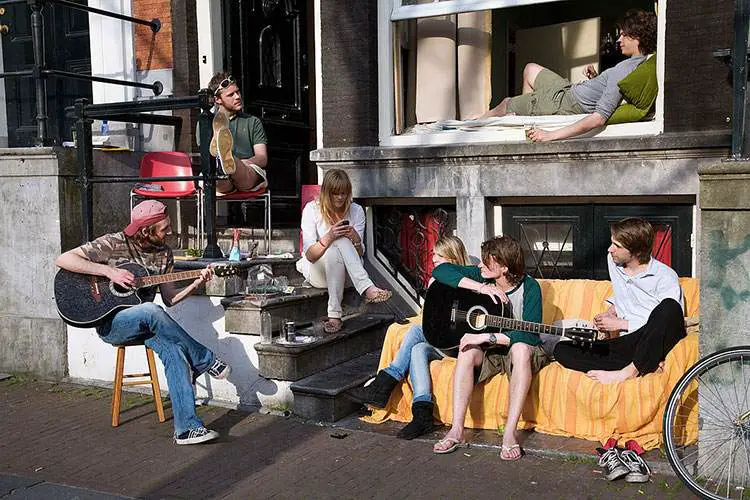
One fine example of a 21st-century intentional community is Twin Oaks in Louisa, Virginia. It’s one of only seven American intentional communities recognized by the Federation of Egalitarian Communities, and it’s the model of the commune of today. Note: You may refer to this “The Atlantic” article for more info.
There is no money necessary at Twin Oaks. However, members can accept gifts from family members and enjoy a modest fluctuating stipend based on profits from selling Twin Oaks’ tofu and other goods in the surrounding towns.
But mainly, members receive free food and necessities as long as they maintain a 42-hour workweek. Duties shift according to the community’s needs and the number of members who request the same post in a given month.
I visited a childhood friend at Twin Oaks in 2019. To justify my presence, I was required to work a shift in the tofu packing building, and I couldn’t help but notice the fast pace, the knowing camaraderie, and the dedication to the quality of my co-workers that day.
As I sliced massive hunks of tofu into one-pound sections, I imagined the other jobs that were being done on the sprawling community’s property – everything from butchering beef cattle to harvesting vegetables.
And more – my friend is himself a book indexer, working off a MacBook Pro in the Twin Oaks computer lab.

And it’s not “all work and no play” at a modern agrarian commune, either. At Twin Oaks, birthdays and holidays are celebrated with rollicking concerts featuring Twin Oaks musicians. My friend plays stand-up bass in a band whose rendition of The Devil Went Down to Georgia made the whole night that New Year’s Eve.
Members have telephones, running water, and electricity, all paid for by out-of-community coffers. They have access to vehicles on a sign-up basis. They have Facebook accounts.
You do not cease to exist when you join – by being voted in after a six-month trial residency – but the feeling of being “unplugged” is still strong. I briefly considered signing up for the initial six months, but on reflection, realized I would miss the hustle and bustle of the mainstream.
Difference Between “Commune” and “Intentional Community”
I should note that although I’ve used multiple terms to refer to homesteading communes here, there are distinctions. For example, you may wonder what the difference is between a commune and an intentional community.
For our purposes, a commune is a community where resources are distributed equally or based on need. In contrast, in an intentional community – although it shares a similar level of social cohesion – the focus is more on a shared vision that inspires tight teamwork and less on strict equitability.
A good rule is, all communes are intentional communities, but not all intentional communities are communes.
What’s It Like to Live in a Commune?
Pondering life at a commune? You should look before you leap. Many people find communal life is better as an idea than a reality.
Is a Commune Communist?
Of course, the question then becomes, is a commune necessarily politically communist? The short answer is no. To answer this, I’m using the most pedestrian research sources.
Wikipedia has two entries under the word “commune.” One for the government system and one “about a group of people sharing a common life.”
The communist system of government, as most veterans of U.S. history classes know, is ideally supposed to come into being after the masses are “freed” from the trappings of unfettered capitalism, a way of doing things that communists believe only benefit the upper classes.
They see communism as a more transparent and localized system that can address the individual’s needs without sacrificing the well-being of the many, namely because needs are needs and not the greedy wishes of the more advantaged.
The Russian anarchist and socialist Pyotr Kropotkin described communism as advocating for each individual more directly – which I’ll summarize as “Let them eat more than cake!” – the antithesis of representative democracy’s only, in his view, an instrument of and for the ruling class.
This is pretty far-flung when compared to the “communism” of holding a work party to get your intentional-community cabin into shape before winter – with participants paid in beer – or leaving your day’s planting to go help a neighbor get his car out of a mud-filled rut a mile down the road.
That’s the main difference. The spirit of pitching in, working together toward a common goal, and supporting each other as members of a tight-knit community are all things to be found in a commune, but when it comes to governance, well, I’ll give an example.
During my childhood, I’d often be dragged to a “Land Trust meeting” at a neighbor’s house – the location would rotate among members’ houses – where a dozen or so equal members would elect a chairperson for that meeting, and then follow a loose parliamentary procedure, where items were proposed, seconded, and voted upon. That’s democratic.
I’d venture to guess that most U.S. communes follow a similar majority rule. No one goes around quoting Marx or demanding that a commune member with a robust crop of corn should distribute so many ears to every other member. That’s just who we are as Americans.
Benefits of Communal Life
So what are the benefits of communal living? What is different from living in the suburbs near a few good neighbors?
As discussed in another of our articles about raising self-sufficient, resilient children, one hugely important thing is to instill values in your youngsters that will last a lifetime and lead to their being stand-out men and women.
For me, that started with having playmates as a child who was just as curious, adventurous, and literate as I was raised to be.
The kids on the land trust – seven or eight homesteads – were always ready to engage in flights of fancy and imagination that would later translate into critical thinking ability.
One neighbor kid has gone on to work as a diplomat with close White House ties. Another eventually opened up a successful and nationally recognized egg-cream shop in Brooklyn, New York.
Yet another grew into a position involving clandestine international travel – and government? I don’t know. But suffice it to say that where I come from, there are many very, very proud parents now enjoying their retirement years. And still going to those semi-formal land trust meetings.
And the older generation of “my people” are no wallflowers, either. A man who was like an uncle to me took his garden, started devoting a section of it to hardy wheat, and ten years later came to lead a statewide alliance on organically grown grains that has also enjoyed national attention, with write-ups in magazines like Gourmet.
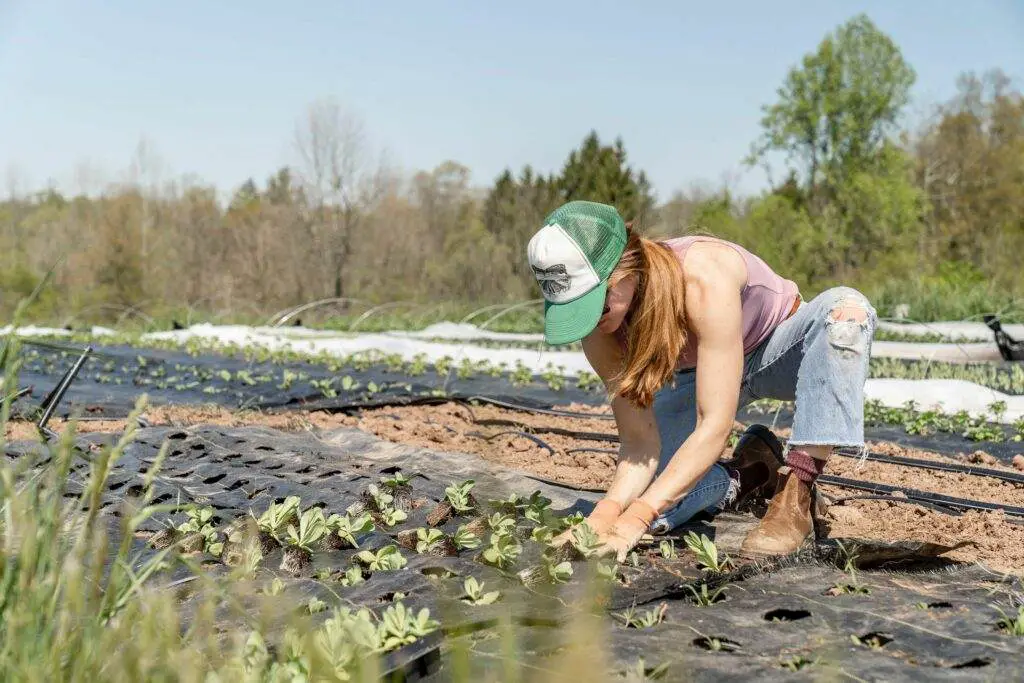
Add to that the undeniable benefit of breathing the clean country air, drinking crystal clear water you haul out of the well in a five-gallon bucket, and eating homegrown vegetables every day, and you’ve got a convincing case for the benefits of communal living.
Challenges of Communal Life
To be fair, though, it’s not all a walk in the park. For instance, being well nigh outside the response area of 911 can bring its stresses. Once, my little brother and another land trust kid were playing around with starting a campfire that almost became its own Camp Fire.
When the two boys saw the flames grow out of control, they were forced against the fear of punishment to run for help, and every adult on the sprawling trust had to come running and form a bucket chain from a nearby frog pond to the quickly spreading fire.
They were successful, but if they hadn’t been, the accident could have cost several homes and that same acre-wide garden. You’ll love my brother’s punishment, too: my father made him write an essay on the dangers of being irresponsible with fire.
And, at least in rural Maine, there’s the cold. Imagine the only heat in your house comes from your Ashley wood stove. Now imagine you’ve gone to a holiday party twenty or thirty miles away. When you get home, your whole house is ice cold.
You’ve got to gather old newspaper, kindling, and finally firewood to get your stove going again, and it does take a while to warm up the house.
You’ve got to throw your kids under feather ticks upon arrival and tell them to tough it out. Don’t even ask me about the “mud season” that comes after the winter.
And then there are the societal drawbacks. Because like it or not, you’ll have dealings in the towns outside your intentional community, and those can sometimes be stressful for adults and children alike. I’ve seen my father hassled at the grocery store because of his long hair.
I remember being in fourth grade. The teacher told us that we were to watch the very first Space Shuttle launch on TV for homework. In all seriousness, I raised my hand and said, “What if we don’t have a TV?” Raucous laughter. Enough to scar a young mind. Enough said.
How to Find a Commune for You
So now we come to the heart of the matter. You’ve weighed all the evidence, do some research on your own, and you’re ready: you want to homestead on a commune.
How do you find the right place with the right people? There are some further questions to consider:
Personal Interests and Goals
How much privacy do you require? How much time do you want to put into community work? Do you want your kids to go to schools in town or to be tutored in the commune? What is your take on firearms, both for hunting and protection, and what is the community’s take?
As you narrow your list of possible homesteading communes, you’ll have not only to ask yourself these questions but also make a visit to the site and, through interviewing, find out how close a match any given commune is to your personal beliefs and attitudes.
Nothing is worse than committing to a living situation only to find out that all you want to do is leave. That holds especially true when you’re talking about becoming a member of a commune.
Geographical Location
Given that every location – from Alaska to Florida, from Maine to Hawaii – comes with its own set of environmental benefits and hazards, this is another factor to carefully consider. How do you feel about snow and ice?
Well, if you’re looking forward to cross-country skiing on trails you blaze yourself, the obvious choice is to the north: Montana, the Dakotas, and New Hampshire. How afraid are you of atmospheric disturbances like hurricanes, tornadoes, and tropical storms?
If you love the heat and are willing to risk storm damage, the South offers some beautiful locales of its own. The geography criterion for communal living is just the same as it would be for a traditional home purchase. Location, location, location.
List of Places to Find a Commune
Okay, you know what you want. Now, what’s out there? Not only that, but how do you get into the place you like? The answers to that are as varied as the communes themselves.
As Gillian Morris, founder of the Hitlist app and co-founder of New York commune Gramercy House says on her blog, “As for the actual recruiting process, I’ve seen everything from written applications reviewed by a central ‘committee’ to a completely decentralized model where the outgoing resident is expected to find his/her replacement.”
That said, I’ve compiled some suggestions for homesteading communes that might be of interest to you:
- Foundation for Intentional Community: For a well-organized, extensive list of operational American homesteading communes – from which the three below were selected – these folks are the go-to spot for many people trying to find a commune. You can also search by “homestead.”
- Common Place Land Trust: Located in the hills of Truxton, New York, this community is accepting new members. Out of the dozen or so homesteads, about half are off the grid. Members have diverse interests, including organic farming, homeschooling, and herbal medicine.
- Common Treasury Farm: As the name implies, this Oregon commune emphasizes raising its veggies and livestock and their related products. The location is described as “very rural,” and CTF explicitly states that they’re looking for members who have homesteading experience.
- New Hampshire Homesteading Community: This strictly off-grid commune boasts an area of 50 acres for homesteading, including miles of hiking trails for extra exercise. Their listing mentions “Fellowship and help from a community of homesteaders.”
Some Queries Related to Communes
How do communes manage money?
It is a collective share of each member of the commune. Everyone pools their money just like a consolidated fund to meet their expenses. however, it’s mandatory for each member to contribute.
What exactly does a commune seem like?
A commune is an intentional community that can be anything from a garden to a house property in which several people reside with similar interests or goals. Unlike other communities, in a commune, people share income, resources, and work responsibilities.
What is the expense of living in a commune?
It varies according to the community. However, the community with the least fee is the one sharing income and often there is no fee at all. In other cases, it may require $500k to buy a home.
What’s the status of communes in today’s world?
In cities like New York and San Francisco, the cost of living is pretty high. That’s why people there are highly opting for shared living, expenses, and work.
How many communes are in the United States?
According to the report of the Foundation of Intentional Community says that the number of communes nearly doubled between 2010-2016 and reached around 1200.
Further Reading and Summary
Was this article not informative enough? Let me suggest a few books for further reading to help you determine if communal life is the right choice for you:
- Droppers: America’s First Hippie Commune, Drop City
- Hippie Woman Wild: A Memoir of Life and Love on an Oregon Commune
- Naked in the Woods: My Unexpected Years in a Hippie Commune
- The 60s Communes: Hippies and Beyond
So there you have it, you now know a bit more about communes and how to find a commune near you. We’ve briefly discussed the nature and history of homesteading communes and whether they’re communist.
We touched on the benefits and drawbacks of communal living. We took a look at how to go about starting your search for the perfect place.
And most of all, I hope you’ve realized that just as a commune member is a part of something larger, an individual commune is a part of a larger, loosely affiliated group or network of similar communities around the country and the world. Isn’t it funny that leaving the mainstream can bring you closer to others?

